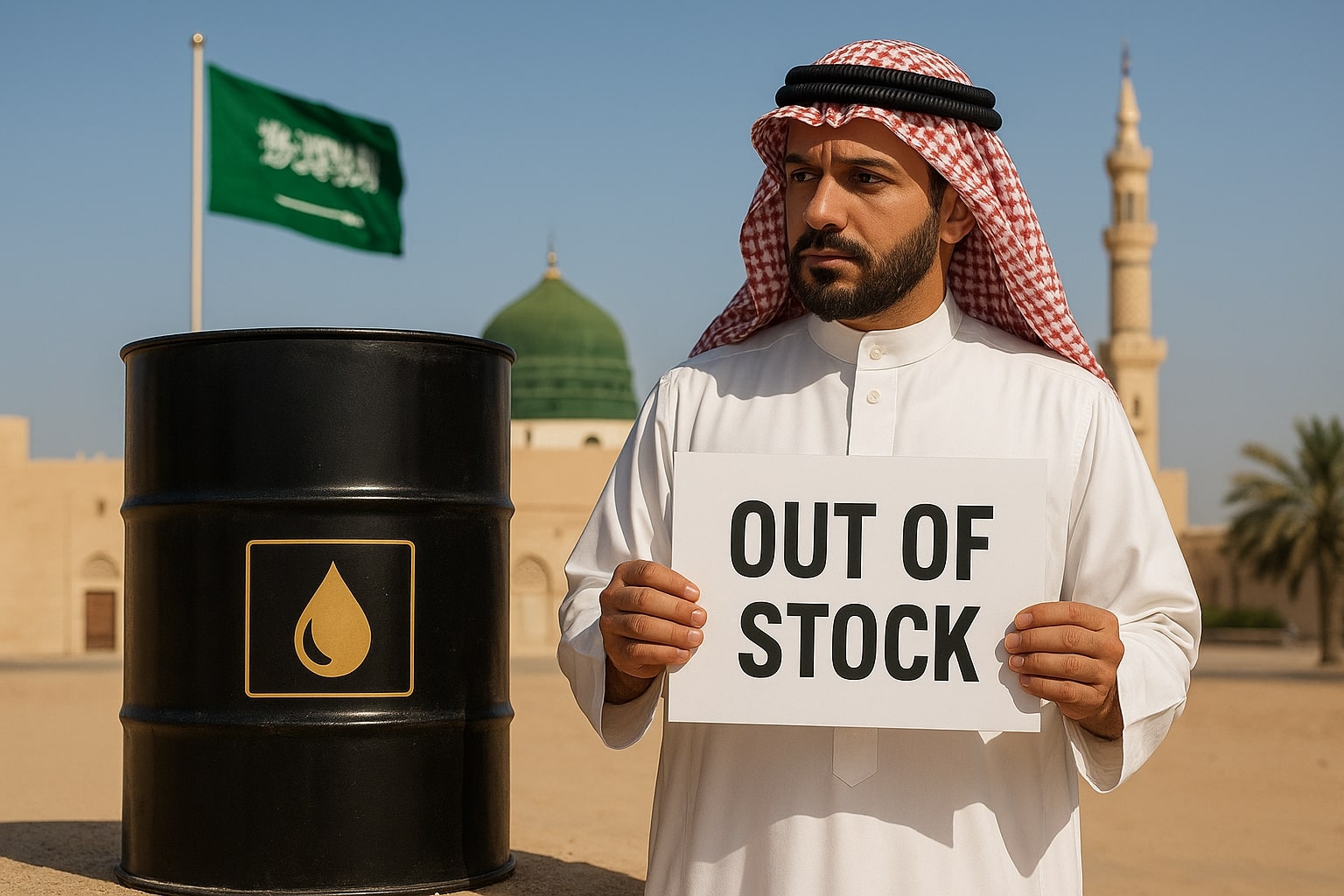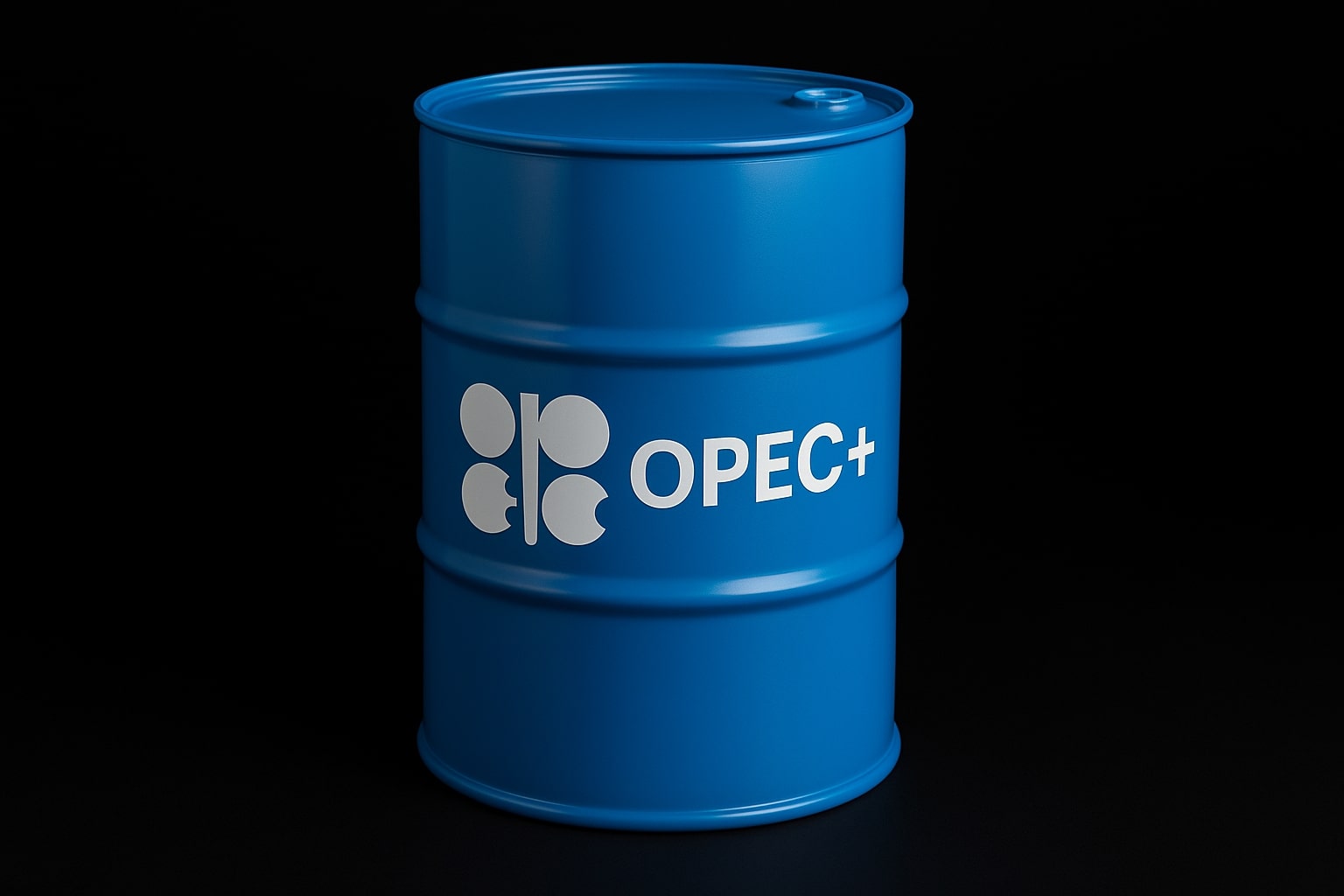
Cheap WTI at $59.67 Supercharges India’s 94.3% Refinery Runs as OPEC+ Eyes June Cuts
Saudi Arabia’s refusal to deepen production cuts sent Brent below $60 while U.S. inventories climbed 4.6 million barrels—will OPEC+ meeting on June 2 rescue oil prices or watch them slide further? | That's TradingNEWS
Cheap Crude Ignites Growth in Major Importers
The plunge of WTI (CL=F) to four-year lows near $59.67 at the end of April sent shockwaves through oil markets, yet it has become a windfall for net-importing economies. India’s crude purchases jumped 18% year-on-year to over 5.5 million barrels per day in Q1, fueled by Russian barrels trading at a $20-plus discount. That surge propelled Moscow past Riyadh and Baghdad as New Delhi’s top supplier for fiscal 2024/25 and helped India sustain GDP growth north of 6%, even as the IMF trimmed its Asian outlook amid tariff-driven concerns. Refiners there ramped up utilisation to 94.3% in April from 91.7% in January, a clear sign that cheap feedstock is translating into tangible economic momentum.
Supply Dynamics: Saudi Arabia and OPEC+ Strategy
Behind this price collapse lies a dramatic OPEC+ maneuver. Reuters sources report that Saudi Arabia balked at deeper production cuts, signaling willingness to endure sub-$65 oil rather than prop prices above $90. At the same time, OPEC+ agreed to add 411,000 barrels per day to May output—triple its prior commitment—deepening global oversupply. U.S. Cushing inventories swelled by 4.6 million barrels in April to 40 million, underscoring that storage capacity remains ample. All eyes now turn to the June 2 OPEC+ meeting: any extension or deepening of cuts could snap the market out of its bearish trance.
Corporate Earnings Spotlight: Exxon’s Q1 Performance
Exxon Mobil’s Q1 results laid bare the pressure on integrated majors. Adjusted EPS of $1.76 narrowly beat the $1.73 consensus but slipped 6% year-on-year as U.S. crude fell 18% year-to-date. Revenue came in at $83.1 billion versus $86.7 billion expected. Upstream gains in the Permian and Guyana partially offset a downstream margin contraction to $9.20 per barrel from $11.40 a year ago. Capital expenditure of $5.9 billion aligned with full-year guidance of $27–29 billion, while $9.1 billion returned to shareholders (comprised of $4.8 billion buybacks and $4.3 billion dividends). With free cash flow margins down to 9.4% from 11.7%, resilience will hinge on a recovery above $70 WTI.
Technological Disruption: Clean Innovation in Fossil Supply Chains
Norway’s 2014 oil crash offers a blueprint for today. When Brent plunged 60% in months, suppliers repurposed their R&D toward renewables: the share of clean-tech investors rose from 18% in 2014 to 31% by 2017, even as overall R&D budgets held flat. Internal adjustment-cost frictions prompted firms to redeploy teams rather than downsize. This suggests today’s low CL=F environment may similarly spur incremental clean innovation within oil-service companies. Policymakers considering carbon pricing could amplify that shift, turning margin pain into a decarbonisation accelerator.
Long-Term Supply Tightening: Legacy Reserves in Focus
With only 25–30% of annual consumption replaced by new discoveries, and U.S. shale poised to peak in the 2030s, the risk of an 18 million b/d supply gap by 2040 is real. Saudi Arabia’s 283 billion barrels of low-cost reserves and spare capacity uniquely position it as the next swing producer, ready to stabilize markets as shale’s growth wanes. Venezuela’s 300 billion-barrel Orinoco belt remains largely untapped—production plummeted to 500,000 b/d in April from over 1 million b/d in 2015—hamstrung by sanctions and infrastructure decay. Should Caracas implement structural reforms, its comeback would reshape global dynamics, as today’s Chinese offtake for discounted Venezuelan crude illustrates continued appetite despite geopolitical risk.
Analytical Verdict: Oil’s Crossroads
The tug-of-war between weak demand forecasts and the growth-fueling effects of cheap barrels leaves WTI at a pivotal juncture. Trade-war anxieties and OPEC+ supply additions have driven prices down from January’s $80 peak to $59.67, yet robust refinery run-rates, strategic buyer arbitrage, and looming mid-year production talks support a snapback toward $70. Cushing inventory builds hint at oversupply, but maintenance season and permitting delays curb U.S. output growth. My view skews modestly bullish: buying near $60 offers asymmetric upside should OPEC+ extend or deepen cuts, with a return to $75 conceivable by year-end. Risks to $55 persist if talks falter and rig counts—now up 15% since February to 530—climb further. Traders seeking to capture the rebound might consider entering around $60 with a stop-loss at $57 and interim targets at $68 and $75.
Can oil’s current weakness sow the seeds for a $75+ rebound if OPEC+ surprises markets on June 2?
That's TradingNEWS
Read More
-
BITQ ETF Soars 66.55% as Bitcoin Blasts Past $124,000 — Crypto Equities Lead 2025 Rally
13.10.2025 · TradingNEWS ArchiveStocks
-
XRP ETFs XRPR, XRPI Slip as Ripple XRP-USD Holds $2.62 — SEC Fast-Track Could Ignite $20B
13.10.2025 · TradingNEWS ArchiveCrypto
-
Natural Gas Price Forecast - NG=F Steadies at $3.00 as U.S. Export Boom Tests Old Fields
13.10.2025 · TradingNEWS ArchiveCommodities
-
USD/JPY Price Forecast - Dollar to Yen Climbs to ¥152.28 as Japan’s Political Shakeup
13.10.2025 · TradingNEWS ArchiveForex



















